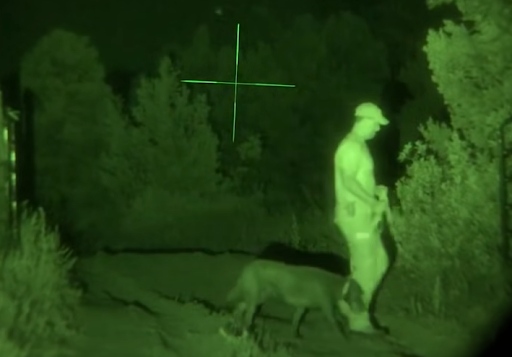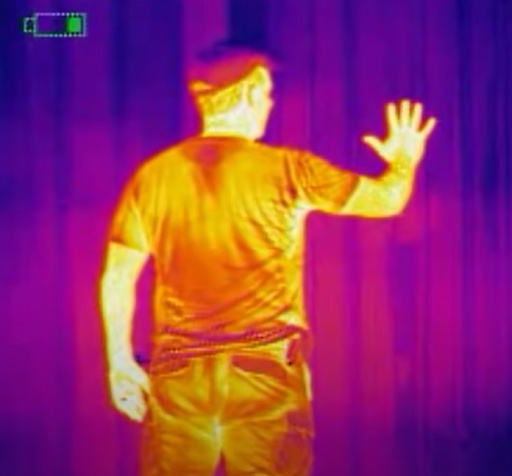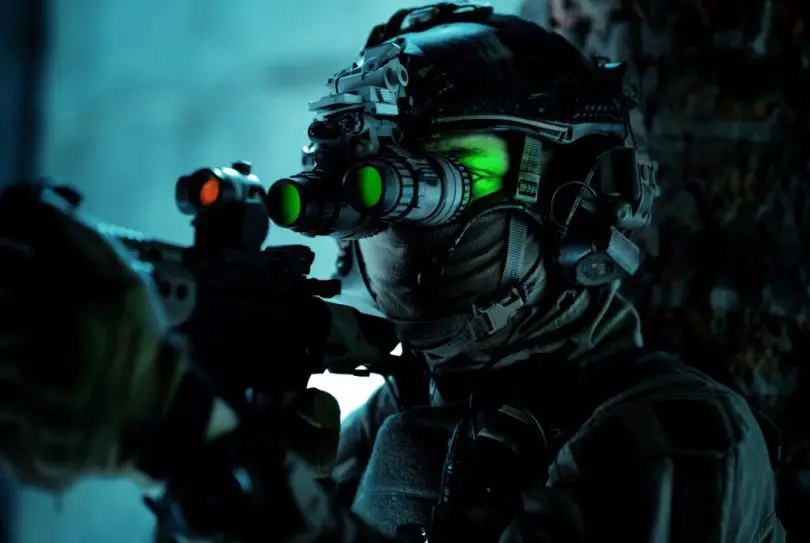We all have heard of night vision technology, and many of us use devices featuring this technology on a regular basis, such as night vision goggles and night vision binoculars. But rarely do we wonder about what exactly is night vision and how it works.
Today we will talk about this amazing technology and the story behind its invention.
What is Night Vision?
Night vision refers to the ability to see in the dark or low-light conditions. Night vision technology helps us see things when there is not much light available. Different types of night vision devices use special sensors or lenses to capture and amplify the available light so our eyes can easily see in darkness.
This technology has a range of applications, including military operations, law enforcement, surveillance, hunting, wildlife observation, navigation, and recreational activities like camping or night photography.
The development and advancement of night vision technology have significantly improved the ability to operate in darkness, enhancing safety, situational awareness, and effectiveness in different scenarios.
How Does Night Vision Work?
There are two types of night vision technology that you should be aware of: image intensification and thermal imaging. Let’s get to know how they work.
a) Image Intensification

This technology amplifies the available ambient light, including moonlight or starlight to produce a visible image. It works by collecting the incoming light through an objective lens and then passing it through an image intensifier tube.
Inside the tube, the light is converted into electrons, which are accelerated and amplified. The intensified electrons strike a phosphor screen to produce a visible image that can be viewed through an eyepiece. This type of night vision technology provides a green-tinted image since most image intensifiers use phosphors that emit green light.
Pros:
- Provides a detailed and clear image in low-light conditions
- Can amplify the available light, making it easier to see in the dark
- Allows for better depth perception and the ability to distinguish objects at different distances
- Offers a real-time view, enabling quick reactions and decision-making
- Relatively compact and lightweight, making it suitable for portable devices
Cons:
- Relies on the availability of some ambient light, so it may not work well in completely dark areas
- Can be affected by bright light sources, causing blooming or temporary blindness
- Limited effectiveness in extreme darkness or when there is no light source at all
- May be more susceptible to damage from bright light or sudden changes in light conditions
- Image quality can degrade at longer distances or in foggy or hazy conditions
b) Thermal Imaging

Thermal imaging technology operates based on detecting the heat emitted by objects rather than relying on visible light. It captures the infrared radiation emitted by objects and converts it into a visible image.
Every object with a temperature above absolute zero emits infrared radiation, and thermal cameras can detect and translate this radiation into a thermal image. Warmer objects appear brighter, while cooler objects appear darker.
In fact, thermal imaging works even in total darkness and can detect the heat signatures of objects, people, or animals.
Pros:
- Works in total darkness since it detects heat rather than relying on visible light
- Provides a clear image regardless of lighting conditions, as it measures temperature differences
- Effective in detecting objects that may be camouflaged or hidden from the naked eye
- Can penetrate certain materials like smoke, fog, or foliage, allowing for better visibility
- Offers a wide field of view and can cover large areas quickly
Cons:
- Thermal images may lack fine details and appear less sharp compared to image intensification
- Cannot distinguish colors or provide the same level of visual detail as visible light
- Much more expensive than image intensification technology
- May be affected by extreme temperature changes or reflections
- Can be limited in identifying certain materials or objects that have similar heat signatures
Different Generations of Night Vision Technology
Night vision technology has evolved over time, with each generation bringing improvements in performance and capabilities. Here are the four generations of night vision technology:
First Generation
The first generation of night vision technology was developed during World War II. It used an image intensifier tube to amplify available light, making it possible to see in low-light conditions.
Although it provided a significant improvement in visibility, the images were often blurry and lacked clarity. These devices required moonlight or other sources of ambient light to work effectively.
Second Generation
The second generation of night vision technology brought significant advancements. It introduced a new component called a micro-channel plate, which increased the brightness and resolution of the images.
This generation also incorporated a chemical called gallium arsenide, which extended the device’s sensitivity to infrared light. As a result, these goggles could provide clearer images even in darker conditions.
Third Generation
The third generation of night vision technology further improved the performance of the devices. It introduced a different type of photocathode called an “ion barrier film” that increased the lifespan of the image intensifier tube. This allowed for longer-lasting and more reliable night vision goggles.
What’s more, this generation implemented improvements in the photocathode sensitivity, resulting in better visibility in extremely low-light environments.
Fourth Generation
The fourth generation of night vision technology represents the most advanced and sophisticated systems available today. It introduced a technology called “filmless” or “auto-gated” image intensifier tubes.
These tubes can automatically adjust the level of amplification based on the amount of light available. This feature protects the device from damage caused by bright light sources, such as the headlights of vehicles.
The fourth generation also incorporates digital night vision technology, which uses digital sensors to capture and enhance images, providing even greater clarity and detail.
How Was Night Vision Technology Invented?
Over the years, night vision technology went through a series of scientific advancements and discoveries. The development of night vision can be attributed to several individuals and the cumulative efforts over time.
Early Discoveries
In the 19th century, scientists began studying and understanding the nature of light and how it interacts with various materials. They discovered that some materials have the ability to emit electrons when exposed to light, a phenomenon known as the photoelectric effect.
Photocathode and Image Intensification
In the early 20th century, scientists developed the concept of the photocathode, a material that releases electrons when struck by photons (particles of light). This led to the creation of the image intensification process.
In the 1930s, scientists like Vladimir Zworykin and Ernst Ruska contributed to the development of electronic image intensifiers, which amplified the available light to create brighter images.
World War II
The necessity for improved vision in low-light conditions during World War II prompted further advancements in night vision technology. Both the United States and Germany worked on developing night vision devices for military use.
The U.S. Army developed the first practical infrared-sensitive night vision system called the “sniperscope,” which used image intensification.
Infrared Imaging
Infrared technology played a significant role in the advancement of night vision. In the 1950s and 1960s, scientists began exploring the use of infrared radiation (heat) to detect objects in the dark.
Thermal imaging devices were developed, which could detect and convert infrared radiation into visible images based on temperature differences.
Continued Improvements
Over the years, night vision technology underwent further refinement and improvements. Advances in electronics, optics, and materials science led to the development of more compact, efficient, and affordable night vision devices.
New generations of image intensifiers and thermal cameras were introduced that offered enhanced performance and capabilities.
How Do Night Vision Goggles Work?
By now, you can probably guess that night vision goggles use the image intensification technology that amplifies or enhances the existing light available in low-light conditions.
These goggles have a lens at the front that captures the light from the environment. The captured light passes through a series of components inside the goggles. One of these components is called an image intensifier tube that plays a crucial role in making the images appear brighter.
Inside the image intensifier tube, there is a photocathode, which converts the incoming light into electrons (tiny particles with an electric charge). These electrons are then accelerated and hit a screen called a phosphor screen. When the electrons strike the phosphor screen, they cause the screen to emit small bursts of light.
This light is then magnified by another set of lenses in the goggles that make the images appear larger and clearer. Finally, the light reaches the eyepieces where you can see the amplified image.
These goggles can work with different types of light, including ambient light, moonlight, or even infrared light, which is not visible to the human eye. Some pairs also have the ability to switch between different modes depending on the available light source.
Wrapping it up
Now that you have an answer to the question “how does night vision work?,” we hope you will be able to find the right night vision device based on your needs and preferences.
If you have any questions or want to share your thoughts, feel free to use the comments section below.
FAQs
1. Does night vision work in the rain?
Ans. Yes, night vision devices can be affected by rain to some extent. Raindrops in the air can scatter and reflect light, which can create a lot of noise or interference for night vision goggles. This can make the images appear distorted or unclear, reducing the effectiveness of the device.
Also, raindrops on the surface of the lens can obstruct the incoming light and cause blurring or distortion of the image. The water droplets can act like tiny lenses and refract the light in unpredictable ways.
2. Why do things look green through night vision goggles?
Ans. The human eye is most sensitive to green light, so night vision devices use phosphors that emit green light when electrons from the image intensifier tubes strike them. This green light is then transmitted to our eyes that creates a green-tinted image.
There are a few reasons why green is chosen as the color for night vision. First, green light provides a good balance between brightness and contrast, making it easier to distinguish objects and details in the dark. Second, the human eye is more sensitive to green light compared to other colors, so even a small amount of amplified green light can be perceived more easily.









Leave a Comment